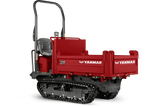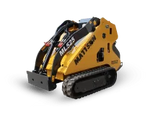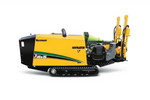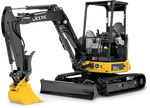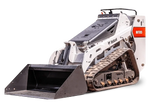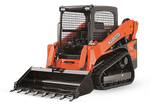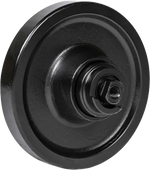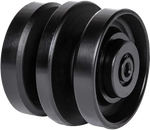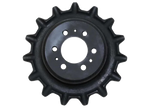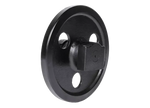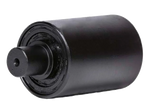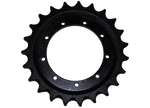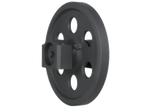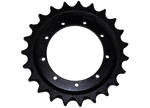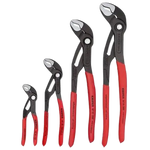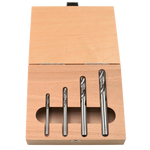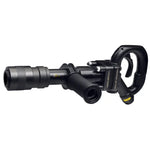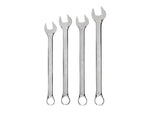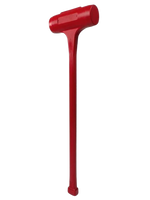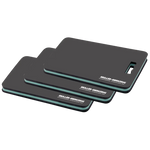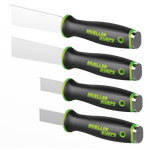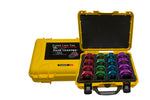4 Ko-ken Socket Designs to Tackle Bolts and Nuts Task Challenges Efficiently
Written by Luis Montes Updated On February 3, 2025

Even something as simple as working on fasteners has its challenges, from dealing with rounded bolts and nuts to dropping them into engine bays.
We’ll review some of the innovative designs Ko-ken has included in its sockets to deal efficiently with those problems you’ll face before they become a time-consuming headache. The socket drives we’ll go over are:


Table of Contents
Flat Drive

The flat drive design is a standard in the industry. Ko-ken has included it in its 6 and 12-point sockets.
The flat drive design aims to prevent the fastener from getting rounded while delivering a higher torque application by moving the torque contact area away from the fastener corners, its weakest structural point.
When the faces of the socket drive transmit the torque from the tool’s anvil to the fastener, they produce pressure forces that act along layers within the corner areas, becoming shear stresses.
The larger the area of the layer, the more it can withstand shear forces and, thus, be less prone to failure and break (Shear force = Shear stress x Area). The images below explain this concept.


Surface Drive

The Ko-ken surface drive design deals with slightly rounded bolts and nuts whose corners have started to wear out.
The surface drive design efficiently applies torque to rounded fasteners by narrowing the socket’s inner faces without significantly reducing their radius. The design moves the contact point even closer to the center of the fastener sides while keeping torque distributed along flat areas.


Unlike aggressive socket designs like Nut Twisters, Flank Bites, or Bolt Extractors (which are suitable for excessively worn-out fasteners), Ko-ken surface drive can also apply torque to painted or polished fasteners without scratches, as well as safely drive soft material bolts and nuts.
Pathfinder

The Pathfinder sockets feature beveled flats that widen the socket drive diameter and gradually narrow from top to bottom.
The bevels allow the socket drive to:
- Easily slip onto the nut/bolt by increasing the tolerance between the socket and the fastener.
- Smoothly engage the fastener as the socket rotates and pushes against the nut or bolt.
As Ko-ken claims, the Pathfinder design suits automatic nut runners for fastening assembly lines. The power tool does not have to be totally stopped for the socket to engage the nut.

Unlike similar products from competitors, which feature beefy walls to withstand high torques, the Ko-ken Pathfinder sockets maintain the thin-wall design that distinguishes the brand without sacrificing strength.
The thin yet resistant walls are thanks to the unique manufacturing process discussed in our Ko-ken impact sockets article.
Besides assembly lines, there are other situations where these bolts could be handy, for example, when you can’t easily engage a fastener or for repetitive tasks where time matters the most—perhaps some sort of pit stop?
Nut Grip

The nut grip is an excellent option for retaining sockets over magnets. It consists of two ball bearings that push an outer spring to hold bolts and nuts reliably.
Magnets are indeed a good way to retain fasteners. However, the nut grip design has several advantages over magnets, such as:
- It doesn’t collect metal dust. Residue buildup gradually reduces magnets’ ability to attract and retain metallic fasteners.
- Magnets are brittle. On the other hand, the nut grip system has a long-lasting lifespan.
- It can retain non-metallic fasteners.
In a Nutshell
Let’s recap what each of the above designs offers you:
- The flat drive prevents bolts and nuts from getting rounded and ensures high torque is delivered.
- The surface drive will loosen slightly rounded fasteners by applying torque near its center faces. Besides, it safely handles soft material fasteners and won’t scratch off the paint from painted or polished ones.
- Pathfinders work best in automatic nut runners fastening assembly lines or tasks where speed prevails over precision.
- Nut grips safely retain fasteners of any material. They last long, don’t collect metal dust (like magnets), and aren’t brittle.
Pair the above sockets with the Ko-ken Z-series ratchets, and you’ll have one of the most versatile kits in your toolbox. Our article “Ko-ken Z-Series: High Torque, Low Profile Ratchets with the Smoothest Back Drag” covers why they have gained so much popularity among mechanics.





